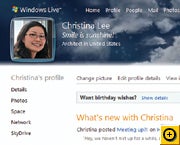 Task Coach 0.71.3Schedule a project & track tasks |  Paragon Partition Manager 9 ExpressManage your basic partitioning tasks with this free tool |
| | |
 BitComet 1.06User-friendly torrent client |  Fresh UI 8.19Optimise and tweak Windows |
| | |
 SyncBack SE 5.2Backup your files and important data |  Avast! Home 4.8.1282Free Vista-compatible anti-virus client |
| | |
Most Popular Downloads
 Adobe Flash Player 9.0.28Latest version of the Flash player |  LimeWire 4.14.10Clear, reliable and free file sharing software |
| | |
Microsoft Windows Media Player 10The all-singing, all-dancing player from Microsoft |  Apple iTunes 7.5Minor upgrade to the media player |
| | |
 CCleaner 2.03.532System cleansing & optimisation tool |  Norton Ghost 12Backup & restore your entire drive |
| | |
DirectX End-User Runtime Web InstallerMicrosoft DirectX is a group of technologies designed to make Windows-based computers an ideal platf... |  Eusing Free Registry Cleaner 1.2Clean up and optimise your registry |
| | |
 Microsoft Windows XP Service Pack 3Final service pack for Windows XP | UEFA EURO 2008 wallpaperDownload the official UEFA EURO 2008™ wallpaper. 800x 600. |
| | |
Recommended Downloads
 Fresh UI 8.19Optimise and tweak Windows |  Paragon Partition Manager 9 ExpressManage your basic partitioning tasks with this free tool |
| | |
 Avast! Home 4.8.1282Free Vista-compatible anti-virus client |  SyncBack SE 5.2Backup your files and important data |
| | |
 Belarc Advisor 7.2.24.14Get a free and detailed PC audit |  BitComet 1.06User-friendly torrent client |
| | |
 Ultimate Boot CD 3.22Create a bootable recovery disc |  UltraDefrag 2Defragment your hard drive quickly and easily |
| | |
 Mozilla Firefox Portable 3.0.4Portable version of the web browser |  Mini Map Sidebar 0.3.8Locate an address from within Firefox |
| | |
 Mozilla Firefox 3.0.4Minor release of the popular web browser |  Mozilla SeaMonkey 1.1.13Complete integrated Internet suite |






